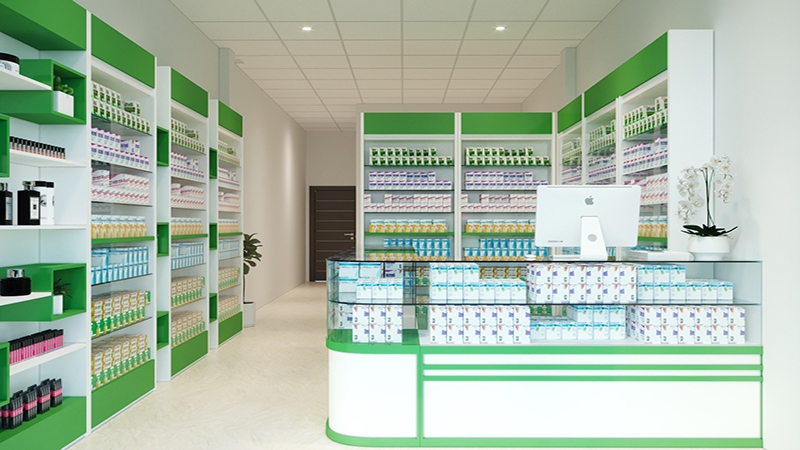Opening a pharmacy requires meeting certain conditions and following specific procedures. This article aims to answer common questions about the requirements and steps to open a new pharmacy.
1. Requirements for Opening a Pharmacy
To open a pharmacy, you need to meet the following conditions:
Physical and Technical Requirements
 Physical and Technical Requirements
Physical and Technical Requirements
Construction and Design
– The pharmacy must be located in a fixed, well-ventilated, safe area, away from pollution sources.
– It should be separated from other activities.
– The building should be sturdy, with a dust-proof ceiling, and walls and floors that are easy to clean. It must have adequate lighting, but direct sunlight should not affect the medicines.
Area
– The area should be proportionate to the scale of the business but not less than 10 square meters. It must include a display and drug storage area and a section for buyers to interact and discuss medicine usage with the retailer.
– If you also sell cosmetics, dietary supplements, or medical devices, they must be displayed in a separate area, not with the medicines, and a sign must read, “This product is not a drug.”
– There should be a designated area for handwashing and cleaning and storing packaging.
Staff Requirements
 Staff Requirements
Staff Requirements
– The person in charge of pharmaceuticals must have a minimum of an associate degree in pharmacy and a current pharmacy practice certificate.
– The pharmacy must have a suitable number of staff (in terms of quantity, qualifications, and professional experience) to match its scale of operations.
– Employees directly involved in selling, receiving, storing, and quality management of medicines must have appropriate professional qualifications and relevant work experience.
Note: The person responsible for pharmacy affairs at the drugstore must have two years of professional practice at a suitable pharmaceutical facility.
Details of the practice of the following specialties: Wholesale and retail drug sales; import and export of drugs; clinical pharmacy, drug supply in medical facilities; drug production; drug and raw material testing; pharmaceutical research; drug storage; drug distribution; drug management at drug administration agencies;
2. Procedure for Applying for a Pharmacy License
Application File for a Pharmacy License

Application File for a Pharmacy License
According to Article 32 of Decree 54/2017/ND-CP, the file includes:
File Components
– Application for a Certificate of Eligibility for Pharmaceutical Business according to the template.
– Certificate of Good Practice at the business location (if any) and technical documents on the location, storage area, storage equipment, technical and personnel documents according to the Good Practice Principles for Retail Pharmacies, including:
+ Personnel organization chart, list of personnel, names, positions, and professional qualifications;
+ Floor plan of the pharmacy’s premises;
+ List of equipment (including information about the computer system and networked management software);
+ List of regulations, documents, technical literature, and standard operating procedures;
+ Self-inspection form for Good Pharmacy Practice according to the checklist in Appendix II – 2a or 2b or 2c attached to Circular No. 02/2018/TT-BYT for facilities applying for a Certificate of Eligibility for Pharmaceutical Business.
Note: Retail pharmacies should clearly state this in the Application for a Certificate of Eligibility for Pharmaceutical Business (according to Clause 2, Article 5 of Circular No. 02/2018/TT-BYT).
– Certified copy of the Enterprise Registration Certificate or legal documents proving the establishment of the facility.
– Certified copy of the Pharmacy Practice Certificate.
* Number of records: 02 sets.
Procedure for Applying for a Pharmacy License
Based on Article 33 of Decree 54/2017/ND-CP and Clause 12, Article 5 of Decree 155/2018/ND-CP, the procedure for granting a Certificate of Eligibility for Pharmaceutical Business is as follows:
Step 1: Submit the application
Submit the application directly to the One-Door Division or by postal mail to the Department of Health where the facility’s business location is.
Step 2: Receive and process
Step 3: Get the results
* Implementation time:
– For cases that have been inspected and do not require an on-site assessment: 20 days from the date on the receipt.
– For cases requiring an on-site assessment: 30 days from the date on the receipt.
* Fee for assessment of pharmaceutical practice standards and conditions: VND 1 million (according to Circular No. 277/2016/TT-BTC)
We have provided you with information about the conditions and procedures for opening a pharmacy. If you plan to open one, please carefully review the above article.






























